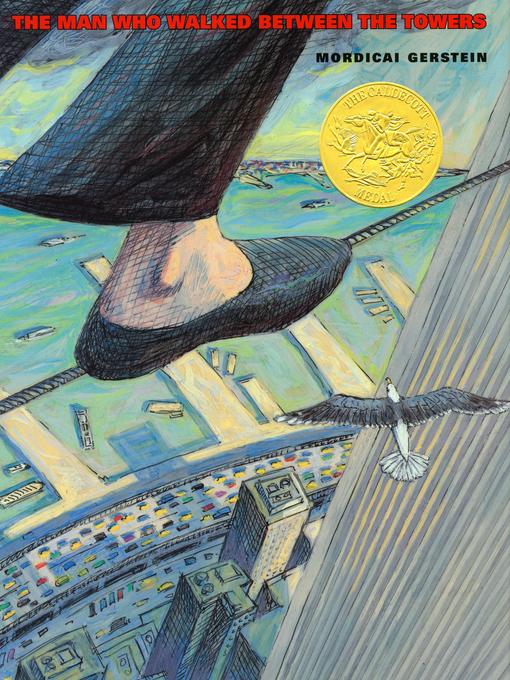"Gerstein's reading is congenial and disarming...his performance, completely engaging." –AudioFile
-
Creators
-
Publisher
-
Release date
April 28, 2016 -
Formats
-
OverDrive Listen audiobook
- ISBN: 9781430125181
- File size: 5537 KB
- Duration: 00:11:32
-
-
Languages
- English
-
Reviews
-
AudioFile Magazine
In 1974, Philippe Petit, a French aerialist and street performer, disguised himself as a construction worker and shot a strong wire from one tower of the World Trade Center to the other. In a death-defying dance, Petit crossed the 140 feet between the towers, a quarter of a mile above New York City. Petit was arrested and sentenced to perform for children in the parks. Gerstein's reading is congenial and disarming. His images are spare yet lyrical, magical and poetic; his performance, completely engaging. His understated delivery captures Petit's playful nature, his delight in imagining himself in the space between the towers, and his satisfaction at achieving the impossible. The closing somber words, "Now the towers are gone," create an indelible memory, part joy, part grief. S.J.H. (c) AudioFile 2005, Portland, Maine -
Publisher's Weekly
Starred review from September 1, 2003
This effectively spare, lyrical account chronicles Philippe Petit's tightrope walk between Manhattan's World Trade Center towers in 1974. Gerstein (What Charlie Heard) begins the book like a fairy tale, "Once there were two towers side by side. They were each a quarter of a mile high... The tallest buildings in New York City." The author casts the French aerialist and street performer as the hero: "A young man saw them rise into the sky.... He loved to walk and dance on a rope he tied between two trees." As the man makes his way across the rope from one tree to the other, the towers loom in the background. When Philippe gazes at the twin buildings, he looks "not at the towers but at the space between them.... What a wonderful place to stretch a rope; a wire on which to walk." Disguised as construction workers, he and a friend haul a 440-pound reel of cable and other materials onto the roof of the south tower. How Philippe and his pals hang the cable over the 140-feet distance is in itself a fascinating—and harrowing—story, charted in a series of vertical and horizontal ink and oil panels. An inventive foldout tracking Philippe's progress across the wire offers dizzying views of the city below; a turn of the page transforms readers' vantage point into a vertical view of the feat from street level. When police race to the top of one tower's roof, threatening arrest, Philippe moves back and forth between the towers ("As long as he stayed on the wire he was free"). Gerstein's dramatic paintings include some perspectives bound to take any reader's breath away. Truly affecting is the book's final painting of the imagined imprint of the towers, now existing "in memory"—linked by Philippe and his high wire. Ages 5-8.
-
Formats
- OverDrive Listen audiobook
Languages
- English
Loading
Why is availability limited?
×Availability can change throughout the month based on the library's budget. You can still place a hold on the title, and your hold will be automatically filled as soon as the title is available again.
The Kindle Book format for this title is not supported on:
×Read-along ebook
×The OverDrive Read format of this ebook has professional narration that plays while you read in your browser. Learn more here.


